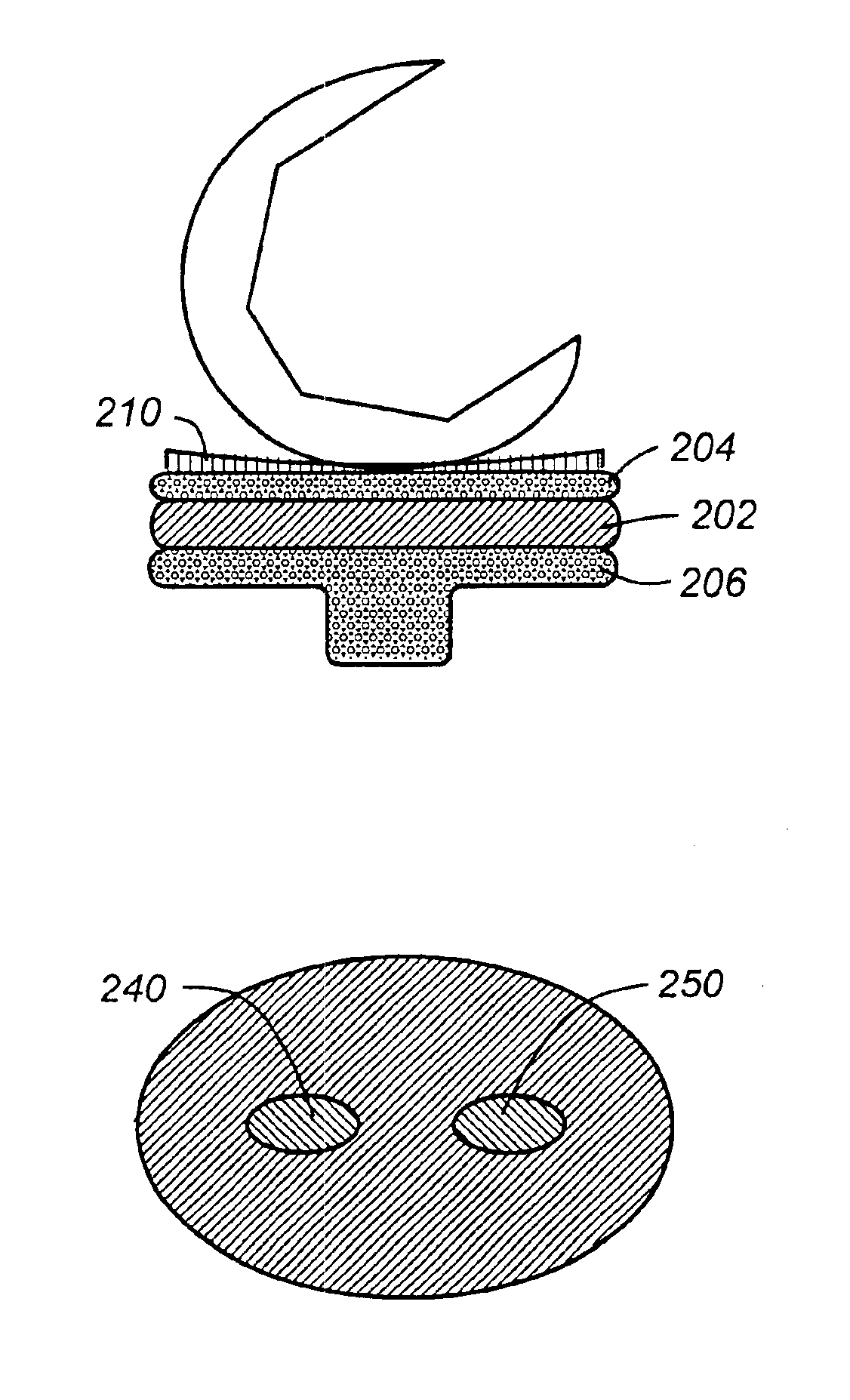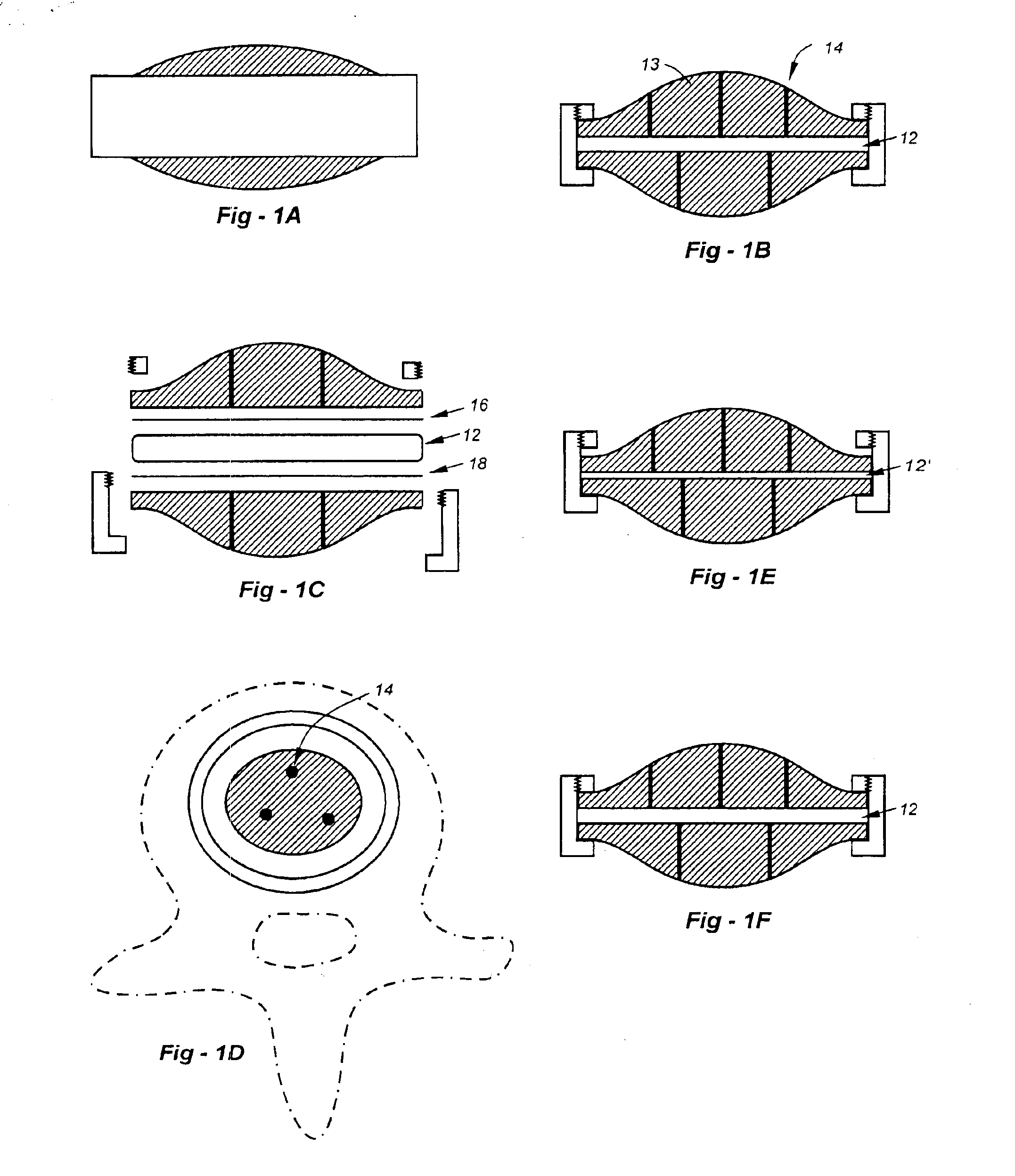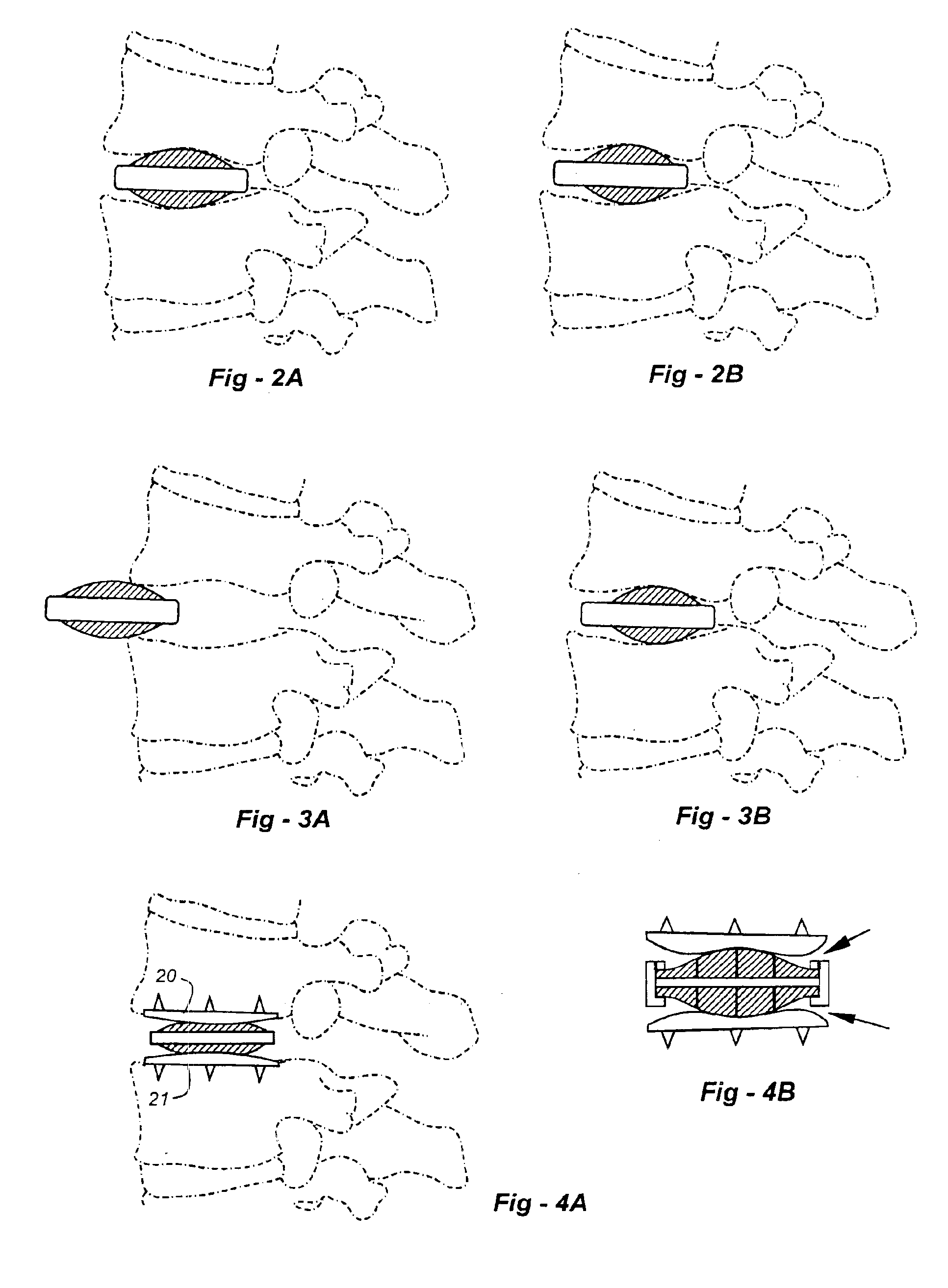Prosthetic joints with contained compressible resilient members
a resilient member and prosthetic joint technology, applied in the field of prosthetic joints, can solve the problems of poly surface wear, poly tray fracture, thinning of the tray, etc., and achieve the effects of reducing the number of fractures, and improving the wear characteristics
- Summary
- Abstract
- Description
- Claims
- Application Information
AI Technical Summary
Benefits of technology
Problems solved by technology
Method used
Image
Examples
Embodiment Construction
This invention address and solves such problems arising in the prior art. The embodiments are applicable not only to ADR devices, but also to joint situations including total knee and hip arthroplasty. The approach effectively combines the advantages of hydrogels (cushioning, shape memory, and expansion after insertion) and rubber or other elastomers (cushioning), while eliminating shear stresses on the polymer. When applied to an ADR, the invention also minimizes the risk of extrusion.
Hydrogels are used in the preferred embodiments. U.S. Pat. Nos. 5,047,055 and 5,192,326 both incorporated by reference, list some of the applicable hydrogels. The small size of the desiccated hydrogel facilitates insertion, after which the hydrogel imbibes fluids and expands. Other non-hydrogel compressible and / or resilient materials may alternatively be used, including elastomers, shape-memory polymers, which would increase in height after they are inserted. As another example of many, non-hydrogel p...
PUM
| Property | Measurement | Unit |
|---|---|---|
| Resilience | aaaaa | aaaaa |
| Compressibility | aaaaa | aaaaa |
Abstract
Description
Claims
Application Information
 Login to View More
Login to View More - R&D
- Intellectual Property
- Life Sciences
- Materials
- Tech Scout
- Unparalleled Data Quality
- Higher Quality Content
- 60% Fewer Hallucinations
Browse by: Latest US Patents, China's latest patents, Technical Efficacy Thesaurus, Application Domain, Technology Topic, Popular Technical Reports.
© 2025 PatSnap. All rights reserved.Legal|Privacy policy|Modern Slavery Act Transparency Statement|Sitemap|About US| Contact US: help@patsnap.com



